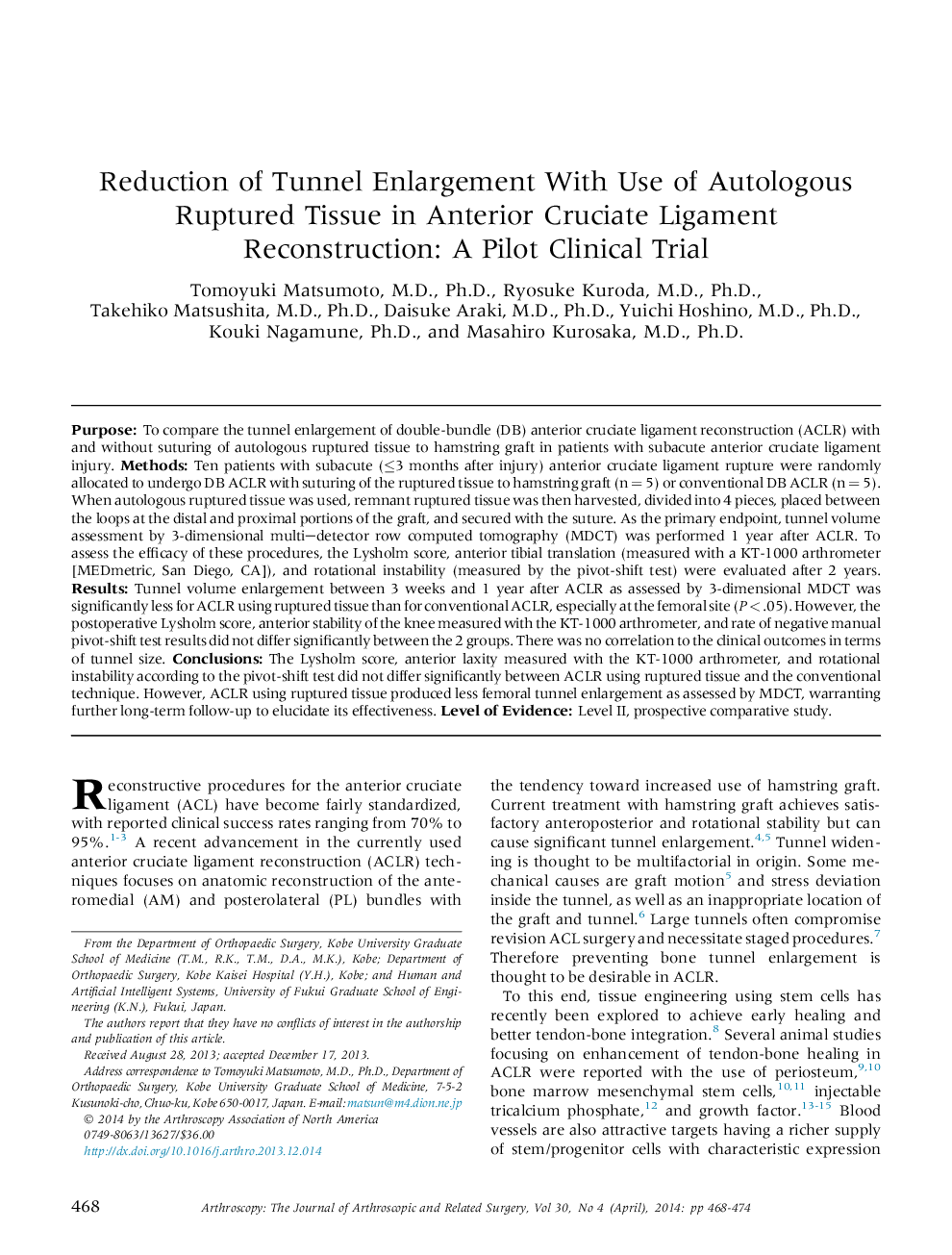| Article ID | Journal | Published Year | Pages | File Type |
|---|---|---|---|---|
| 4043145 | Arthroscopy: The Journal of Arthroscopic & Related Surgery | 2014 | 7 Pages |
PurposeTo compare the tunnel enlargement of double-bundle (DB) anterior cruciate ligament reconstruction (ACLR) with and without suturing of autologous ruptured tissue to hamstring graft in patients with subacute anterior cruciate ligament injury.MethodsTen patients with subacute (≤3 months after injury) anterior cruciate ligament rupture were randomly allocated to undergo DB ACLR with suturing of the ruptured tissue to hamstring graft (n = 5) or conventional DB ACLR (n = 5). When autologous ruptured tissue was used, remnant ruptured tissue was then harvested, divided into 4 pieces, placed between the loops at the distal and proximal portions of the graft, and secured with the suture. As the primary endpoint, tunnel volume assessment by 3-dimensional multi–detector row computed tomography (MDCT) was performed 1 year after ACLR. To assess the efficacy of these procedures, the Lysholm score, anterior tibial translation (measured with a KT-1000 arthrometer [MEDmetric, San Diego, CA]), and rotational instability (measured by the pivot-shift test) were evaluated after 2 years.ResultsTunnel volume enlargement between 3 weeks and 1 year after ACLR as assessed by 3-dimensional MDCT was significantly less for ACLR using ruptured tissue than for conventional ACLR, especially at the femoral site (P < .05). However, the postoperative Lysholm score, anterior stability of the knee measured with the KT-1000 arthrometer, and rate of negative manual pivot-shift test results did not differ significantly between the 2 groups. There was no correlation to the clinical outcomes in terms of tunnel size.ConclusionsThe Lysholm score, anterior laxity measured with the KT-1000 arthrometer, and rotational instability according to the pivot-shift test did not differ significantly between ACLR using ruptured tissue and the conventional technique. However, ACLR using ruptured tissue produced less femoral tunnel enlargement as assessed by MDCT, warranting further long-term follow-up to elucidate its effectiveness.Level of EvidenceLevel II, prospective comparative study.
